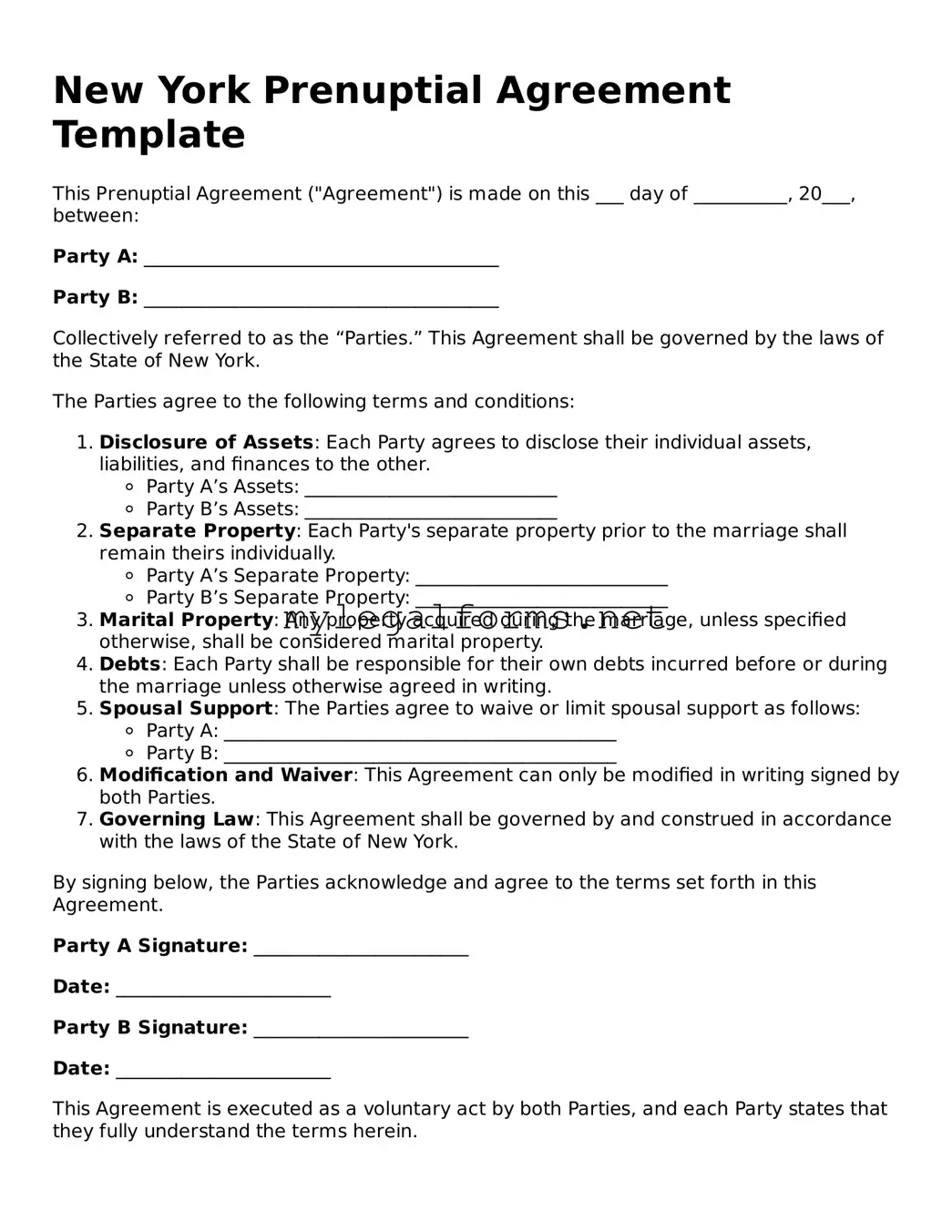Entering into a prenuptial agreement is a significant step for many couples, but mistakes can easily occur during the process of filling out the New York Prenuptial Agreement form. Understanding these common pitfalls can help ensure that the agreement is valid and serves its intended purpose.
One frequent mistake is failing to fully disclose assets and debts. Transparency is crucial in a prenuptial agreement. When one party does not provide a complete picture of their financial situation, it can lead to disputes later on. Both parties should take the time to list all assets, liabilities, and income sources comprehensively.
Another common error involves using vague language. Clarity is key in legal documents. If the terms of the agreement are ambiguous, it may lead to different interpretations down the line. Couples should strive for specificity in outlining how assets will be divided, what happens in the event of divorce, and any other relevant conditions.
Some individuals neglect to consider future changes. Life is unpredictable, and circumstances can shift dramatically over time. A well-drafted prenuptial agreement should account for potential changes in income, the birth of children, or other significant life events. Including provisions for these possibilities can help prevent conflicts in the future.
Additionally, couples often overlook the importance of having independent legal representation. While it may seem convenient to use one attorney for both parties, this can lead to conflicts of interest. Each person should have their own legal counsel to ensure that their rights are protected and that they fully understand the implications of the agreement.
Another mistake is failing to review the agreement regularly. A prenuptial agreement should not be a static document. As lives change, so too should the agreement. Couples should plan to revisit and, if necessary, amend the prenup to reflect their current situation and intentions.
Lastly, some couples rush through the process. Taking the time to thoughtfully discuss and negotiate the terms of a prenuptial agreement is essential. Rushing can lead to misunderstandings and resentment, which can undermine the relationship. Engaging in open dialogue about financial matters can strengthen the partnership even before the wedding.
In summary, avoiding these seven mistakes—disclosure issues, vague language, neglecting future changes, lack of independent legal representation, failure to review the agreement, and rushing the process—can help couples create a solid prenuptial agreement that protects their interests and fosters a healthy partnership.
